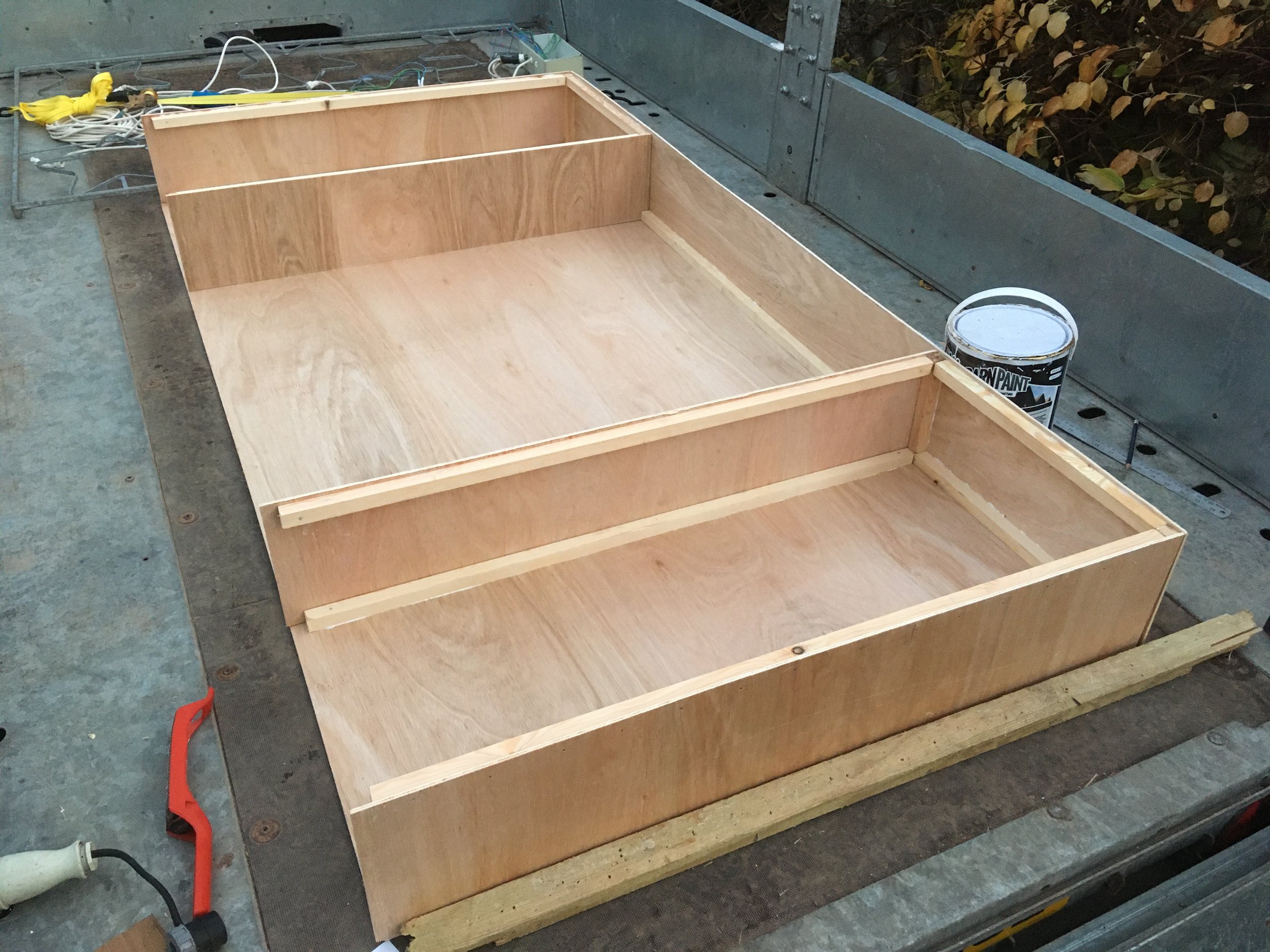The Making of the Clock
Why does the clock play a carol at twenty past three? Well, the answer to that can be found below, in the story of the “Christmas Time” clock.
This was the brainwave of Roger Wilkins, our longest-serving stalwart, but would never have become the complex piece of kit that it is without the skills of our electronics guru Kevin Lovell. How the idea came about we are not totally sure, but the memories of the old Artist’s Town Clock that stood in this position for many years must have been part of it, and the ability to play tunes, along the line of many town clocks on the continent, was too good to miss, so the project - our first to combine sounds with lights - was born.
We realised, when chatting the idea through, that our Arduino computers, together with Kevin’s relay boards, were capable of powering solenoids, and had enough memory to store some tunes. The next question was how to find a xylophone or bells which our limited budgets could afford. That led to the purchase of some children’s handbells, which could be got for under thirty quid. Sadly, you get what you pay for, and the first set was so out of tune, especially a mournful E in the key of C, that a second set had to be bought to combine the best of two to get something bearable (but we know not perfect)! Kevin sourced some solenoids on e-bay, and then Roger tried all sorts of mechanical systems to combine the two. Direct action hitting the bells with the solenoid shafts did not work, and eventually (after consulting books on the construction of percussion systems on fair organs) strikers were made, using steel strip (used in heavy duty packing) for the levers, and large washers as the strikers. This was the initial lash-up which worked, and these are what are fitted to the clock:
The clock was relatively straightforward. The whole thing is a plywood box (with very many thanks to Bromyard Timber for donating the ply) which makes a secure case but light enough to be carted around:
The clock itself is made of two sheets of Perspex (the most expensive individual item), one opal, with rows of LED lamps behind, with wooden Roman numbers ( E-bay again), a clock mechanism with incredibly light balanced hands, and a clear sheet in front.
Kevin devised a light-sensitive diode to trigger the hourly concert (ha!) which you can just see in the middle of XII. The rest of the build more-or-less came together as it went, including lights to shine on the bells as they play, the sign above, and the bells on the balcony either side, which work as part of the display.
Trying to programme the computer was quite something. Roger worked out the tunes, whilst Kevin devised a programming system. We devised a method which enabled us to silence the bells after seven, as we were concerned about the noise. The only way to do this was for the switch-on each way to trigger the start of a sequence (hence to 3.20) and then hourly, but with a random choice of tunes. In fact, with soundproofing to the rear, the bells were quieter than we thought (where it was built in Pencombe Road we thought it could be heard miles away!) and it became possible to have the bells ringing right through until ten. The sequence has eight tunes, but are played randomly. Two additional channels make the light bells on the balconies move in time with the music. So there it is! So far, apart from a couple of minor adjustments, it’s been pretty reliable, but we will see; there is some time to go yet. It is running slightly slow - sorry about that, but adjusting the clock isn’t easy - it involves some dismantling but we will do that when it gets seriously wayward.
We in the Light Brigade have some seriously big ideas at times. The new snowflake, masterminded by Roo, broke all records in the number of electrical connections - so that is pretty impressive. Some ideas for the future are even more outlandish - watch this space!


